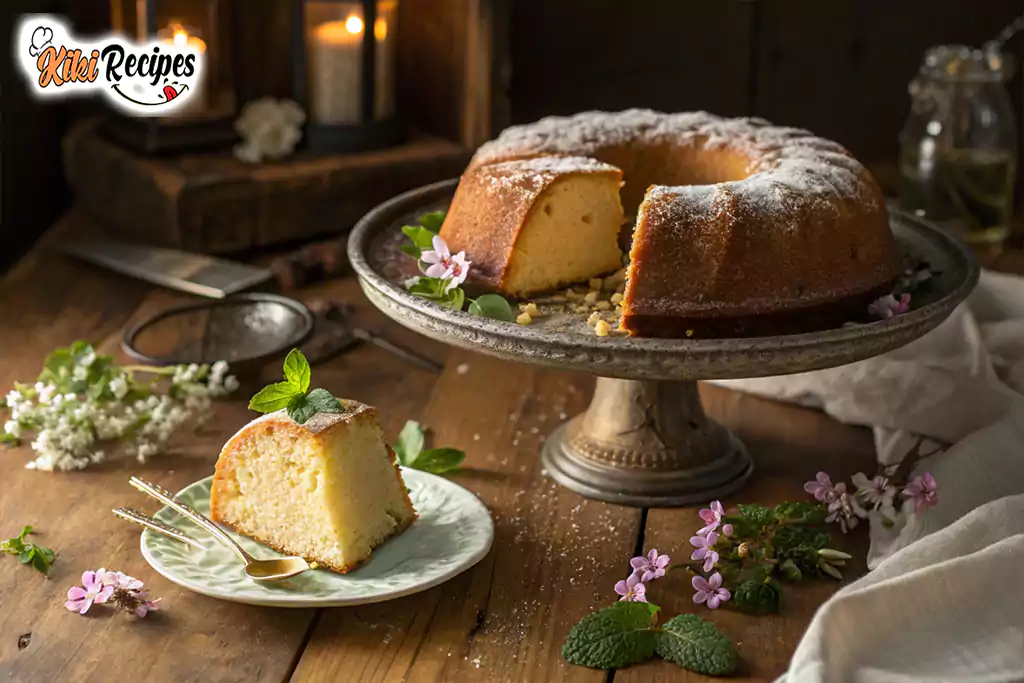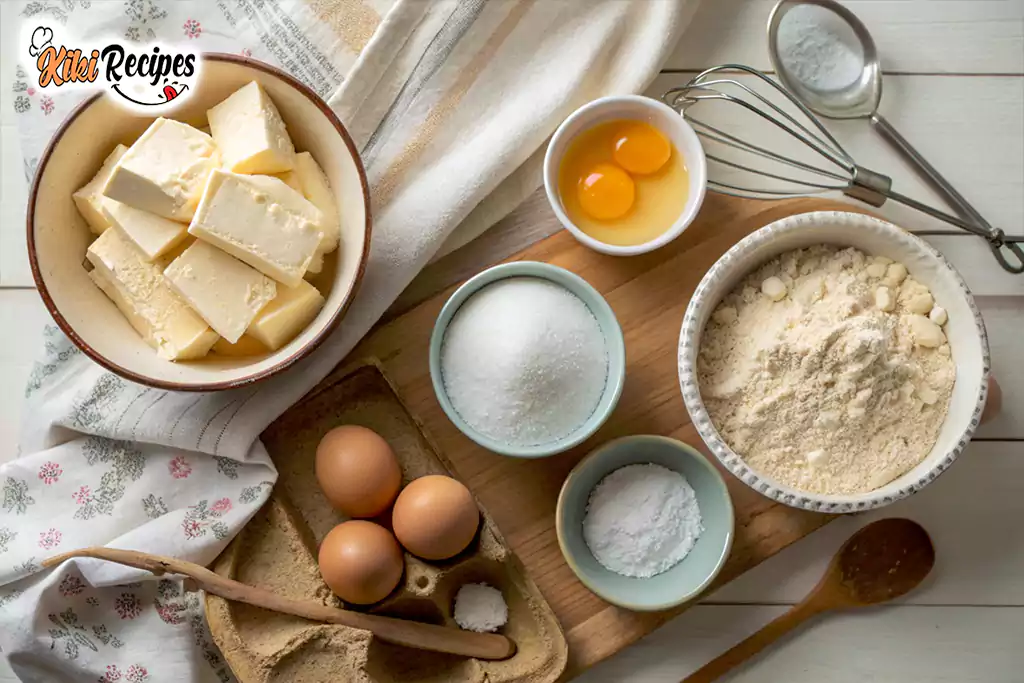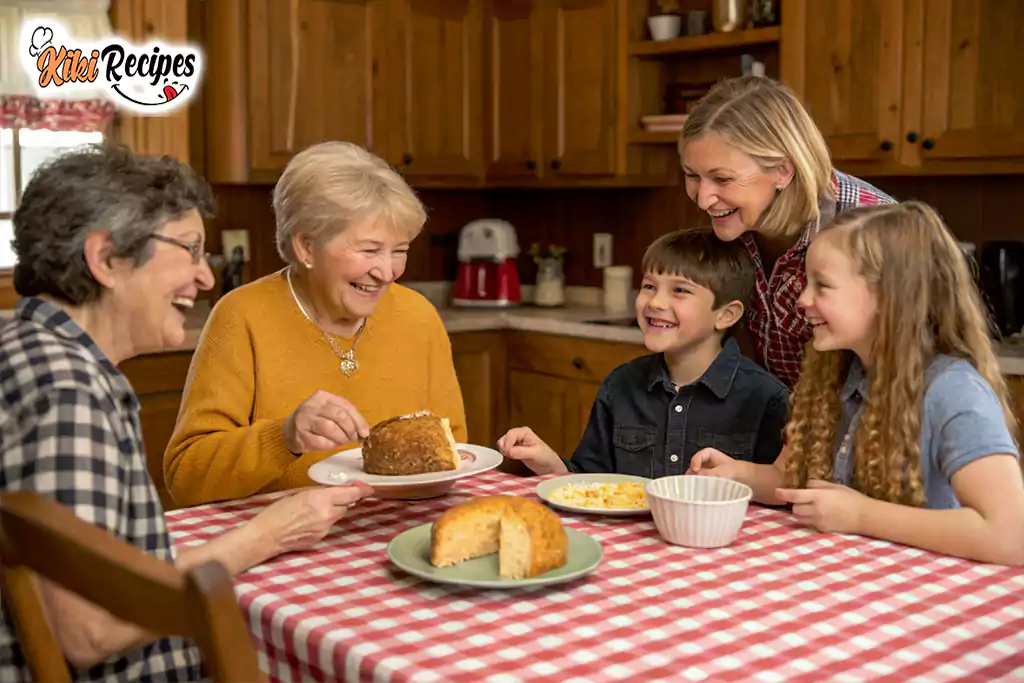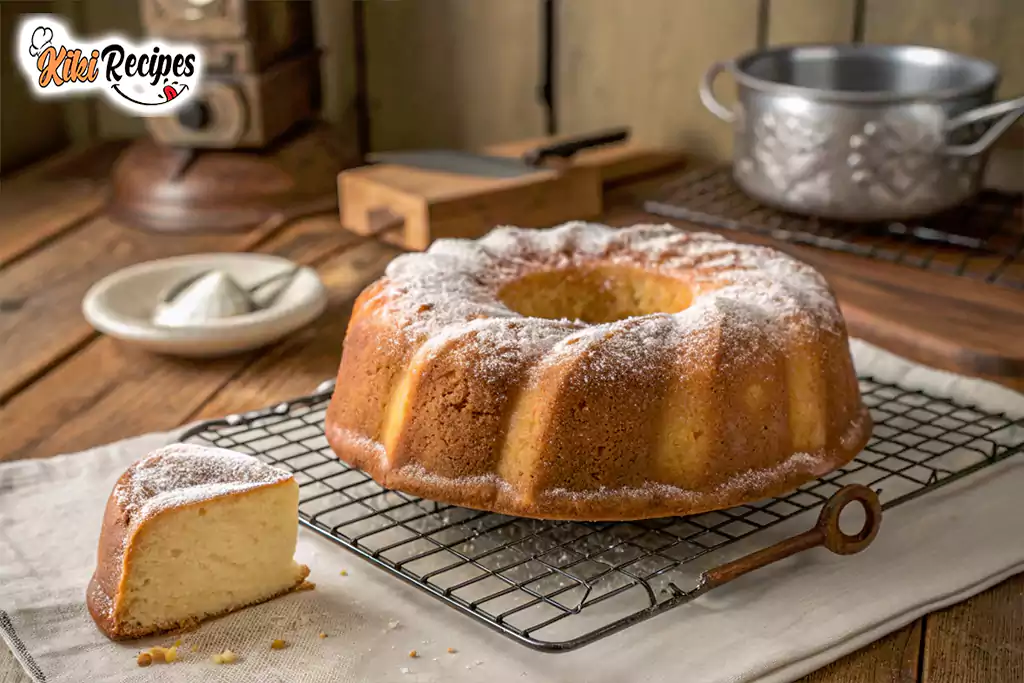
Introduction to Grandma’s Pound Cake Recipe
If you’re looking for a recipe that brings a taste of nostalgia and tradition to your kitchen, then you’ve found it with Grandma’s pound cake recipe. This delightful dessert has stood the test of time, filling kitchens with the sweet scent of buttery goodness and the promise of a melt-in-your-mouth experience. Simple yet sophisticated, pound cake has always been a favorite in many households, especially for special occasions like family gatherings, birthdays, and holidays.
But what makes Grandma’s pound cake so special? Well, it’s not just about the ingredients; it’s about the love and care that goes into making it. Whether it’s that signature dense texture or the perfectly moist crumb, this recipe is designed to bring joy with every bite. It’s the kind of cake you’ll want to bake again and again—and trust us, everyone will be asking for the recipe.
In this article, we’re going to take you step by step through Grandma’s classic pound cake recipe. We’ll explore the essential ingredients, share tips for making it extra moist, and discuss different variations to suit any occasion. So, let’s get started on baking the most delicious and fluffy pound cake ever!
Ingredients for Grandma’s Pound Cake Recipe

2.1 The Essential Ingredients You Need
To bake Grandma’s pound cake, you only need a handful of ingredients, many of which you probably already have in your kitchen. Let’s take a closer look at the essential ingredients that make this cake so incredibly rich and moist:
- All-purpose flour: The backbone of any good pound cake. Using all-purpose flour helps to create a light and airy texture, perfect for that melt-in-your-mouth experience.
- Unsalted butter: Butter is crucial in this recipe. The richness of unsalted butter adds moisture and flavor. Make sure it’s softened to room temperature for the best results.
- Granulated sugar: The sweetness and texture of the cake rely on granulated sugar. It helps create that perfect balance of flavors and contributes to the cake’s delicate crumb.
- Eggs: Eggs provide structure to the cake while also helping to keep it moist. Large eggs are typically used, and make sure they’re at room temperature to ensure they mix better into the batter.
- Vanilla extract: For flavor, nothing beats the classic taste of vanilla extract. This ingredient adds depth and richness to the cake’s flavor profile.
- Baking powder: Baking powder helps the cake rise, giving it that perfect lift. Without it, the pound cake might end up too dense.
- Salt: A small pinch of salt enhances the flavors and balances the sweetness in the cake.
- Milk or Heavy Cream: Adding milk or heavy cream keeps the batter moist and contributes to the cake’s soft, tender crumb. Use whichever you prefer, although heavy cream will give a richer texture.
Each ingredient plays a vital role in creating the texture, flavor, and overall quality of the cake. By combining them in the right proportions, you’ll end up with a truly unforgettable pound cake.
2.2 Ingredient Substitutes for Dietary Preferences
Now, if you or your guests have dietary preferences or restrictions, don’t worry! You can still enjoy Grandma’s pound cake by making a few simple substitutions. Here’s a list of alternatives that will allow you to make this cake without compromising on taste:
- Gluten-free flour: If you’re following a gluten-free diet, substitute regular all-purpose flour with gluten-free all-purpose flour. Make sure it contains xanthan gum or add it separately to maintain the cake’s structure.
- Dairy-free alternatives: For those who need a dairy-free option, substitute unsalted butter with dairy-free margarine or coconut oil. Instead of milk or cream, use almond milk, soy milk, or coconut milk.
- Egg substitutes: If you’re vegan or allergic to eggs, you can use flaxseed meal or chia seeds as egg replacements. For each egg, mix 1 tablespoon of flaxseed meal or chia seeds with 3 tablespoons of water and let it sit for a few minutes to thicken.
- Sugar substitutes: For a healthier option, you can substitute granulated sugar with Stevia, erythritol, or another low-calorie sweetener. Be sure to adjust the quantity based on the sweetness level of your chosen substitute.
These substitutions allow anyone to enjoy the taste of Grandma’s pound cake without worrying about dietary restrictions. The flavor and texture may change slightly, but the heartwarming taste of this classic cake will remain just as delightful.
2.3 Tips for Choosing the Best Ingredients
When making Grandma’s pound cake, the quality of your ingredients can make a huge difference in the final outcome. Here are some pro tips to ensure you’re using the best possible ingredients:
- Use real butter: While it may be tempting to opt for margarine or a butter substitute, real butter is key to achieving that rich, buttery flavor and moist texture. Always use unsalted butter to control the amount of salt in your recipe.
- Fresh eggs are best: Always use fresh eggs. Older eggs can cause the cake to collapse or become dense. Room temperature eggs blend better with the butter and sugar, leading to a smoother batter.
- Choose pure vanilla extract: For the most authentic flavor, always use pure vanilla extract rather than artificial vanilla flavoring. It adds depth and warmth to your cake.
- Sift your dry ingredients: Sifting the flour, baking powder, and salt together helps prevent clumps and ensures they are evenly distributed in the batter. It also adds air to the mixture, contributing to a lighter cake texture.
By paying attention to the quality of your ingredients, you’re setting yourself up for a delicious result. After all, great ingredients lead to great cakes!
Step-by-Step Instructions for Grandma’s Pound Cake Recipe
3.1 Preheat the Oven and Prepare the Cake Pan
Before you get into mixing your ingredients, it’s important to preheat your oven to 325°F (163°C). This ensures your cake starts baking immediately when the batter is ready. While the oven heats up, prepare your cake pan—this step will save you time later.
- Grease and flour the pan: Use butter or non-stick spray to grease the pan, then dust it with a light coating of flour. Alternatively, you can use parchment paper to line the bottom and sides of the pan for easy removal once the cake is baked. A standard 9×5-inch loaf pan works perfectly for this recipe.
Properly preparing the pan helps prevent the cake from sticking, ensuring you get a smooth, perfect slice every time.
3.2 Creaming Butter and Sugar
One of the most important steps in making Grandma’s pound cake is creaming the unsalted butter and granulated sugar together. This step creates a light, airy texture that’s key to the cake’s delicate crumb.
- Beat until light and fluffy: Start by placing your softened butter and sugar in a large mixing bowl. Using a hand mixer or stand mixer, beat the butter and sugar on medium speed for 3-5 minutes, until the mixture becomes light in color and fluffy in texture. This incorporates air into the batter, which helps the cake rise beautifully.
- Why this step matters: When butter and sugar are creamed together properly, it creates tiny air bubbles that make your cake rise evenly and contribute to that sought-after moist texture.
3.3 Adding Eggs and Vanilla Extract
Next, it’s time to add your eggs and vanilla extract to the butter-sugar mixture. This helps build the structure and flavor of your pound cake.
- Add eggs one at a time: Crack your eggs into a small bowl to check for any shell fragments before adding them to the batter. Add one egg at a time, mixing well after each addition. This ensures the eggs blend seamlessly into the butter-sugar mixture.
- Mix in the vanilla extract: Once all the eggs are incorporated, add 1 tablespoon of pure vanilla extract. Mix until everything is smooth and combined. The vanilla will add that signature, comforting flavor that makes Grandma’s pound cake unforgettable.
- Tip: Make sure your eggs are at room temperature, as this helps them blend better and prevents the batter from curdling.
3.4 Mixing Dry Ingredients
While the wet ingredients are coming together, it’s time to prepare the dry ingredients. This will ensure everything is evenly distributed in your cake batter.
- Sift your dry ingredients: In a separate bowl, sift together 2 ½ cups of all-purpose flour, 1 teaspoon of baking powder, and 1/2 teaspoon of salt. Sifting helps remove any lumps and aerates the flour, giving your cake a lighter texture.
- Why sifting matters: Sifting dry ingredients is crucial for even distribution and avoids clumping. It also helps incorporate air, making the cake rise more uniformly.
3.5 Alternating Dry and Wet Ingredients
Now it’s time to combine the wet and dry ingredients. This step should be done carefully to maintain the light texture of the cake.
- Alternating flour and milk: Gradually add the sifted dry ingredients to the butter-sugar-egg mixture, alternating with ½ cup of milk (or heavy cream). Start with about a third of the dry ingredients, followed by half of the milk, and continue this process until all ingredients are incorporated.
- Don’t overmix: Mix the ingredients until just combined. Overmixing can lead to a dense cake. Stir gently with a spatula or beat on low speed to avoid overworking the batter.
- Tip: Be sure to scrape down the sides of the bowl as you go to ensure everything is well-mixed.
3.6 Baking and Cooling
Now that your batter is ready, it’s time to bake your Grandma’s pound cake. This is the step where patience truly pays off.
- Pour the batter into the pan: Transfer your cake batter into the prepared pan. Use a spatula to smooth the top evenly.
- Bake: Place the pan in the preheated oven and bake for 60-75 minutes, or until a toothpick or cake tester inserted into the center of the cake comes out clean. Baking times may vary depending on your oven, so start checking around the 60-minute mark.
- Why it’s important to test for doneness: If the cake is not fully baked, it may collapse or become overly moist in the center. If it’s done, the top should be golden brown and firm to the touch.
- Cooling: Once the cake is baked, remove it from the oven and let it cool in the pan for 10 minutes. After that, transfer it to a wire rack to cool completely. This cooling time ensures the cake firms up, making it easier to slice.
3.7 Tips for Perfect Pound Cake Texture
Want to make sure your Grandma’s pound cake turns out light, moist, and perfectly fluffy? Here are a few extra tips to help you get the best possible results:
- Use room-temperature ingredients: Room temperature butter, eggs, and milk blend better and create a smoother batter. Cold ingredients can cause the cake to be dense.
- Don’t overmix the batter: Overmixing can lead to a tough, dense cake. Mix the batter only until the ingredients are just incorporated.
- Check the oven temperature: Ovens can vary, so make sure your oven is actually at 325°F (163°C) by using an oven thermometer. If the temperature is too high, the cake may burn on the outside before fully baking inside.
- Be patient: Resist the urge to open the oven door too frequently. Opening the door lets heat escape and can cause the cake to sink.

FAQs Section: Answering Common Questions About Grandma’s Pound Cake
What is the secret to super moist cake?
The secret to a super moist pound cake lies in the balance of ingredients and technique. One of the main secrets is to use room-temperature butter, eggs, and milk. This ensures a smoother batter and better texture. Additionally, don’t overmix the batter—this can cause the cake to become dense and dry. Another trick is to incorporate sour cream or heavy cream into the batter, as they add moisture and richness. Lastly, baking at the right temperature (around 325°F) ensures the cake cooks slowly and evenly, retaining its moisture.
Is it better to use cake flour or all-purpose flour for pound cake?
For traditional Grandma’s pound cake, all-purpose flour is typically the preferred choice. All-purpose flour gives the cake its characteristic dense yet moist texture. While cake flour is lighter and results in a softer cake, it can make the pound cake too delicate. If you’re looking for a richer, more substantial cake, stick with all-purpose flour. However, if you prefer a lighter crumb, you can experiment with substituting cake flour—just be aware it might alter the final texture.
How many eggs is 1 pound?
In terms of weight, one pound of eggs typically equals around 8 large eggs. However, for Grandma’s pound cake recipe, you don’t need to measure by weight. The usual amount for a classic pound cake is about 4 to 5 eggs, which provides the right structure and moisture for the cake. The number of eggs can vary slightly based on the size of the eggs and the specific recipe you’re using, but 4 large eggs are generally perfect.
What makes a pound cake turn out dry?
A pound cake can turn out dry for several reasons. First, overmixing the batter can lead to a dense, dry cake. When you mix the batter too much, you activate the gluten in the flour, making the cake less tender. Second, overbaking the cake can cause it to dry out—always check for doneness early to avoid this. Additionally, using too much flour or not enough fat (like butter or cream) can result in a dry texture. Make sure to follow the recipe precisely and measure your ingredients carefully to avoid these pitfalls.
Conclusion
There’s nothing quite like Grandma’s pound cake recipe—a timeless classic that fills your home with warmth and sweetness. With its rich, buttery flavor and soft, moist crumb, this cake is a true labor of love. Whether you’re following the traditional recipe or adding your own twist with variations and toppings, the simplicity and nostalgia of this cake will never go out of style.
By carefully selecting your ingredients, following the step-by-step instructions, and using the tips shared here, you’re sure to create a pound cake that will have everyone asking for a second slice. It’s the perfect dessert for family gatherings, holidays, or just an afternoon treat with a cup of tea.
So, next time you’re in the mood for something delicious and comforting, reach for Grandma’s pound cake recipe. You can be sure that every bite will transport you back to simpler times, filled with family, love, and the irresistible scent of freshly baked cake.
You’ll Also Love
Grandma’s White Cake Recipe: A Classic, Moist, and Fluffy Delight

